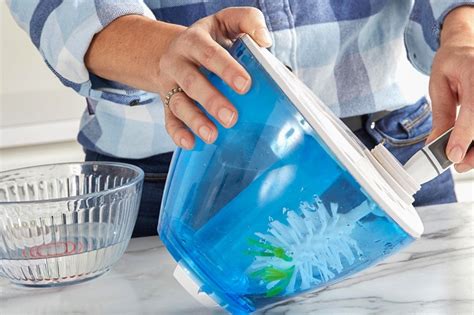How To Clean Mist Nozzle
Ronan Farrow
Mar 24, 2025 · 3 min read

Table of Contents
How to Clean a Mist Nozzle: A Comprehensive Guide
A clogged mist nozzle can be incredibly frustrating, leading to poor performance and wasted resources. Whether you're using it for gardening, cleaning, or industrial applications, a clean nozzle is essential for optimal functionality. This comprehensive guide will walk you through various methods to effectively clean your mist nozzle, ensuring its longevity and peak performance.
Understanding the Problem: Why Does My Mist Nozzle Clog?
Before diving into cleaning solutions, it's crucial to understand why your mist nozzle might be clogged in the first place. Common culprits include:
- Mineral deposits: Hard water containing minerals like calcium and magnesium can leave behind residue, gradually blocking the tiny nozzle openings.
- Sediment and debris: Particles present in the water source, such as dirt, sand, or algae, can accumulate and obstruct the nozzle's delicate mechanism.
- Chemical buildup: If you're using treated water with chemicals or additives, these substances can crystallize and clog the nozzle over time.
- Rust and corrosion: Metal nozzles are susceptible to rust and corrosion, particularly if exposed to moisture and fluctuating temperatures.
Effective Methods for Cleaning Your Mist Nozzle
The best cleaning method depends on the type of nozzle and the severity of the clog. Here are some proven techniques:
1. The Simple Soak: For Mild Clogs
This is the first and easiest approach. Simply:
- Remove the nozzle: Carefully detach the nozzle from its housing.
- Soak in vinegar: Submerge the nozzle in a container filled with white vinegar. Vinegar's acidity helps dissolve mineral deposits. Let it soak for several hours, or even overnight.
- Rinse thoroughly: After soaking, rinse the nozzle with clean water to remove any remaining residue.
- Inspect and test: Check for any remaining obstructions and test the nozzle's functionality.
2. The Needle/Pin Method: For Stubborn Clogs
If soaking doesn't suffice, a small needle or pin can help dislodge stubborn clogs:
- Caution: Exercise extreme caution to avoid damaging the delicate nozzle openings.
- Gently probe: Insert a thin needle or pin into the nozzle's openings, carefully dislodging any blockages.
- Rinse thoroughly: After clearing the obstructions, rinse the nozzle thoroughly with clean water.
- Test the spray: Check the spray pattern for improvement.
3. The Pressure Cleaning Approach: For Heavy Clogs
For heavily clogged nozzles, a more forceful cleaning method is often necessary:
- Compressed air: Use compressed air to blast away stubborn clogs. Be gentle to avoid damaging the nozzle.
- Water pressure: If you have access to a high-pressure water source, you can carefully use a low-pressure setting to clear the nozzle.
- Caution: Use these methods cautiously, as excessive pressure can damage the nozzle.
4. Using a Cleaning Solution: For Persistent Mineral Deposits
If vinegar soaking proves ineffective, consider a specialized cleaning solution:
- Commercial cleaners: Explore commercial nozzle cleaners designed for removing mineral deposits and other stubborn clogs. Follow the manufacturer's instructions carefully.
- Citric acid solution: Prepare a solution of citric acid and water. Citric acid is a natural cleaning agent known for its ability to dissolve minerals. Again, follow appropriate safety precautions.
Prevention is Key: Maintaining Your Mist Nozzle
Regular cleaning and maintenance are crucial for preventing future clogs and extending the lifespan of your mist nozzle. Consider these preventative measures:
- Use filtered water: Using a water filter helps reduce the amount of sediment and minerals entering your system.
- Regular flushing: Periodically flush the nozzle with clean water to prevent buildup.
- Proper storage: Store the nozzle in a clean, dry place to prevent corrosion and rust.
By following these tips and techniques, you can ensure your mist nozzle remains clean, efficient, and ready for optimal performance, saving you time, money, and frustration. Remember always to prioritize safety when using any cleaning method.
Featured Posts
Also read the following articles
| Article Title | Date |
|---|---|
| How To Fix Sun Bleached Clothes | Mar 24, 2025 |
| How To Clean Mist Nozzle | Mar 24, 2025 |
| How To Gig For Flounder | Mar 24, 2025 |
| How To Clean Ppf | Mar 24, 2025 |
| How To Clean A Fish Tank After Fish Died | Mar 24, 2025 |
Latest Posts
-
How Late Is Too Late For A Date
Apr 05, 2025
-
How Late Can You Plant Sunflowers Zone 5
Apr 05, 2025
-
How Late Can You Overseed In The Fall
Apr 05, 2025
-
How Late Can You Be On A Chapter 13 Payment
Apr 05, 2025
-
How Late Can Solicitors Come To Your Door
Apr 05, 2025
Thank you for visiting our website which covers about How To Clean Mist Nozzle . We hope the information provided has been useful to you. Feel free to contact us if you have any questions or need further assistance. See you next time and don't miss to bookmark.
